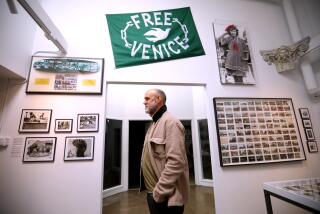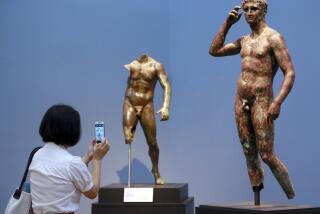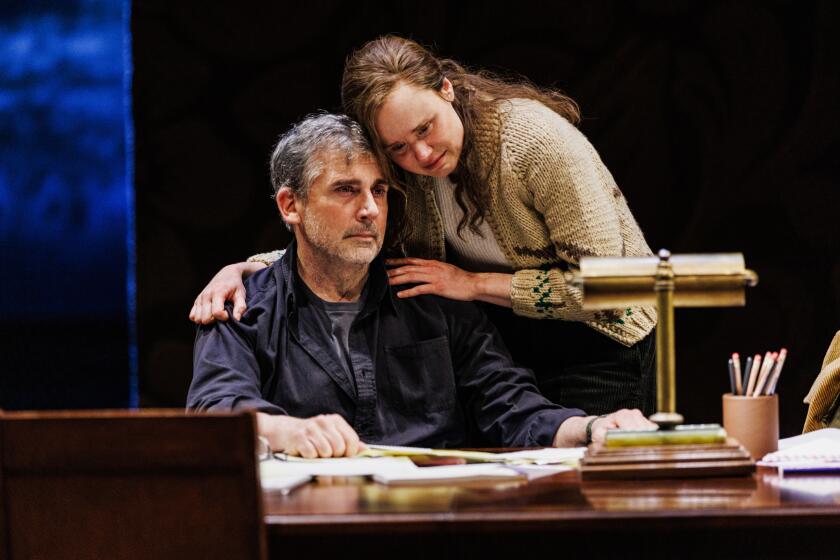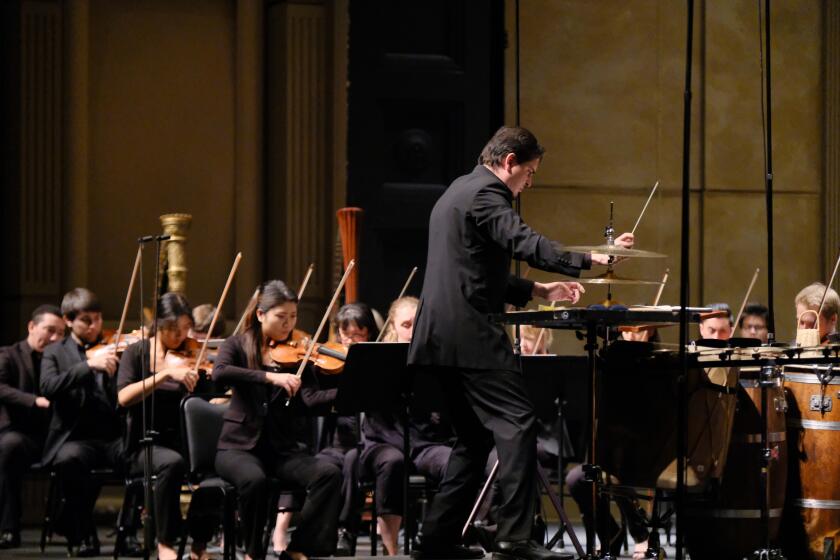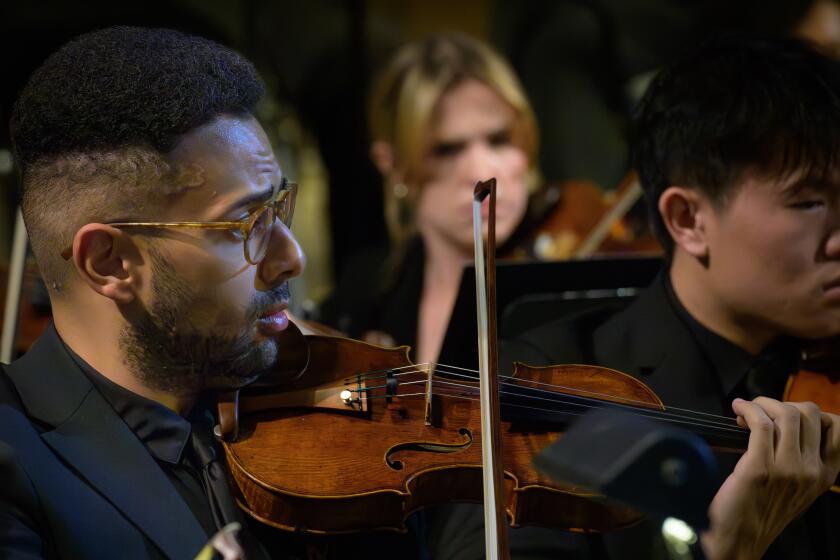Review: ‘Sculpture in the Age of Donatello’ shows artist’s competitive spirit
Donato di Niccolò Bardi, better known to posterity as Donatello (circa 1386-1466), decamped from Florence, Italy, in 1443 for what turned out to be a decade-long sojourn in Padua, about a hundred miles north on the outskirts of Venice.
The lure was a coveted commission for a colossal bronze equestrian statue, but he was less than thrilled about the move. Donatello missed the fierce artistic competition back home.
Big fish, big pond was better, he believed, than big fish, little pond.
Renaissance chronicler Giorgio Vasari tells us in “Lives of the Most Excellent Painters, Sculptors, and Architects” that the sculptor was annoyed by all the roses adoring Paduans threw his way. He was an out-of-town celebrity, all right, famous for his powerful work at Florence Cathedral. But Donatello thrived on a test of wills as being essential to producing his best work. Flattery was not enough.
That climate of intense rivalry is at the heart of “Sculpture in the Age of Donatello: Renaissance Masterpieces From Florence Cathedral,” a small but breathtaking exhibition of 23 works that is among the standouts of the season. It features three Donatello masterpieces, including one that is surely the finest carving he made.
The surprising show is at the little Museum of Biblical Art, a modest institution soon to lose its home on the second floor of the American Bible Society, near Lincoln Center on Manhattan’s Upper West Side. The museum announced recently that it would permanently close after nearly 10 years, at the end of the exhibition’s run. That’s disappointing, but it is certainly going out on a high note.
Remaining through June 14, the show was organized by Donatello scholar Daniel M. Zolli and Timothy Verdon, director of the Museo dell’Opera adjacent to Florence Cathedral, where the sculptures are normally kept. (Renovation of the Museo, which allowed for the extraordinary loan, is nearing completion; it reopens in November.) The copiously illustrated catalog is excellent.
Artistic conflict came with the Florentine territory, where guys like Filippo Brunelleschi and Lorenzo Ghiberti were steadily nipping at Donatello’s heels. Brunelleschi and Ghiberti had duked it out for the commission to design relief sculptures for a set of bronze doors at the Florence Baptistry, a competition Ghiberti handily won.
He went on to fashion one of the most riveting sculptural ensembles the Renaissance produced.
Unbowed, Brunelleschi abandoned sculpture and promptly bested Ghiberti in the architectural competition to put a massive dome on the cathedral next door, which had been under construction for a century. Many thought the task impossible, given the size of the span, the weight of the structure and limitations on building methods in the middle of the city. Brunelleschi managed it anyhow.
In the show, the dark wooden models for the dome, apse and lantern attributed to Brunelleschi don’t fully reveal the cleverly complicated system he devised. (The dome is a double shell with eight visible, umbrella-like ribs filled in by a whorled pattern of bricks.) But, like finely crafted pieces of antique furniture, the gorgeous models do give a clear sense of just how important the job was.
Originally painted, the wooden model for the dome was damaged in 1966 when the Arno River overflowed its banks in a ruinous flood. Paradoxically, the otherwise tragic loss of color emphasizes the form’s harmonious geometries.
Nothing by Ghiberti is here, but the show opens with the influence that his brilliant reliefs for the Baptistry doors had on sweeping aside the remnants of Medieval Gothic style in Renaissance Italy. Three replicas of those reliefs are juxtaposed with limestone carvings by an unknown sculptor, made for a far-off church in a small provincial town.
The limestone carvings are in poor condition. Some figures are virtually lifted from Ghiberti, though, such as a man with a small monkey on his shoulder — an evil omen, lurking behind the Three Wise Men who have come to adore the infant Jesus.
Donatello’s competitive spirit is the exhibition’s focal point, manifest in the stunning juxtaposition of two monumental seated sculptures.
Each is nearly 7 feet tall, carved in Carrara marble for the Florence Cathedral façade. Ten feet off the ground, flanking the entry portal, elevated niches would hold Nanni di Banco’s “St. Luke the Evangelist” on the left and Donatello’s “St. John the Evangelist” on the right.
The sculptors, together with Niccolò Lamberti, were competing for the final commission to carve the fourth evangelist for the façade. Being the author of two would have awarded the winning artist bragging rights — but none of them got the job.
Donatello especially was busy with several commissions, and the authorities were impatient for the cathedral project’s completion. They awarded the fourth evangelist to Bernardo Ciuffagni before the competitors had finished. Ciuffagni’s sculpture turned out to be dull.
Do yourself a favor: If you can, squat down in the gallery to get as low a vantage point as possible for seeing the two monumental sculptures. The museum shows them on raised pedestals, but there’s only so high that they can go. How Donatello’s sculpture bests Nanni’s quickly becomes clear.
Nanni gives us a handsome classical figure whose head, regally perched atop the poised hexagonal mass of the composition, is a fine adaptation of ancient Roman portraiture. Luke, a slight and benevolent smile crossing his lips, casts his eyes down at the faithful, who pass by on their way through the cathedral doors.
The depiction of the saint, patron of artists, sweeps across time. Pagan, Christian and contemporary history arrive at a zenith in one commanding sculpture.
Donatello’s John, by contrast, begun when the artist was just 22, has other things on his mind — literally.
Rich, dark shadows in the drapery below John’s knees indicate a depth of surface carving, which gets shallower the farther one goes up the figure’s torso. That’s one clue to Donatello’s savvy compensation for how the sculpture would be seen by a viewer standing many feet below.
Another is John’s oversized right hand, which rests on his knee, and the graceful left hand casually draped across his gospel book. His torso, when viewed closer to eye level, seems elongated or stretched. But seen from below, the torso shrinks down and recedes, flattening behind the lively folds of drapery.
John’s commanding head is also Roman, like Luke’s, but the depth of the swirled carving in the beard, brow and hair adds drama. His eyes are raised, looking up into some hazy, unspecified distance, as if lost in interior thought — perhaps contemplating the gospel’s revelatory word.
The sculpture’s carved forms pop into perceptual place in the viewer’s space and time. You become a kind of vanishing point, the focus of its four-dimensional perspective.
Nearby, a lovely hexagonal relief sculpture by Luca della Robbia articulates a related Renaissance ideal: A bard strums a lute and sings, drawing forth birds and animals from the protective forest through the power of his music. Nature is the handmaiden of art.
The Della Robbia helps illuminate Donatello’s grand achievement. (He’s also thought to have modeled the lovely gilded figure of Christ on an exquisite processional cross in the show.) Della Robbia is better known for decorative reliefs in glazed ceramic, but the sensitive carving of this modest marble panel and the modeling of the crucifixion display his tactile genius.
All of this prepares one for “Lo Zuccone” — Pumpkin Head — the gaunt, even emaciated figure of a bald prophet that once stood 30 feet up on the bell tower. Some scholars think he might be Habakkuk, who wondered aloud why God did not seem to answer suffering humanity’s cries for help.
The specific identity isn’t really crucial, though. Like St. John, this sculpture of a biblical mystic compensates for the angle and distance of viewers down below — here, most notably in the sunken brow and dark slash of shadow formed by his opened mouth. You can read them clearly from far away.
The sculptural fiction is that he’s about to speak, offering a revelation. The sculptural reality is that we know he can’t.
In the visible tension between our inexorable, onrushing mortality and our deep ache for human insight, Donatello, not yet 40, fashioned his most profound work of art.
Twitter: @KnightLAT
More to Read
The biggest entertainment stories
Get our big stories about Hollywood, film, television, music, arts, culture and more right in your inbox as soon as they publish.
You may occasionally receive promotional content from the Los Angeles Times.
